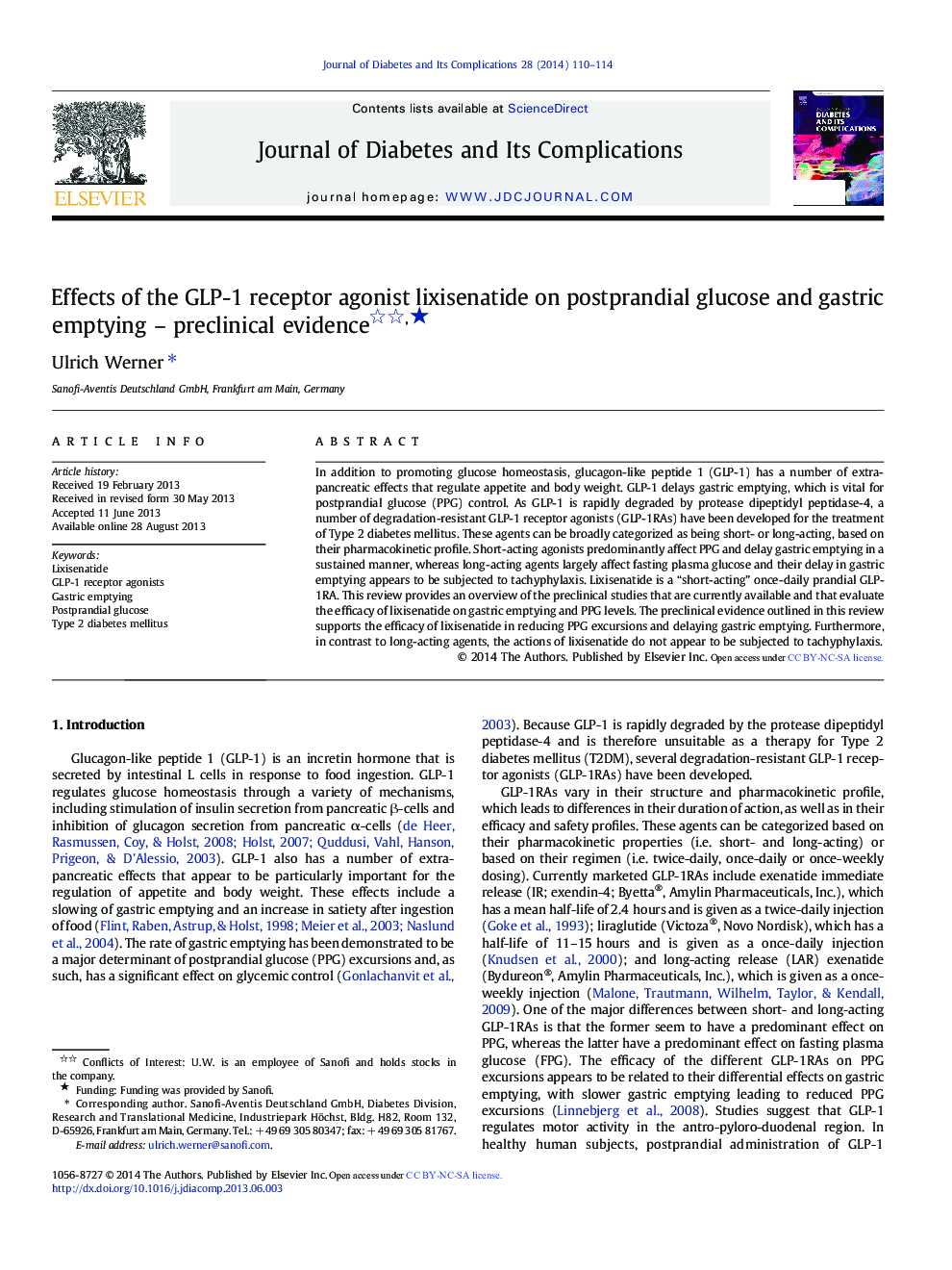| Article ID | Journal | Published Year | Pages | File Type |
|---|---|---|---|---|
| 5902243 | Journal of Diabetes and its Complications | 2014 | 5 Pages |
In addition to promoting glucose homeostasis, glucagon-like peptide 1 (GLP-1) has a number of extra-pancreatic effects that regulate appetite and body weight. GLP-1 delays gastric emptying, which is vital for postprandial glucose (PPG) control. As GLP-1 is rapidly degraded by protease dipeptidyl peptidase-4, a number of degradation-resistant GLP-1 receptor agonists (GLP-1RAs) have been developed for the treatment of Type 2 diabetes mellitus. These agents can be broadly categorized as being short- or long-acting, based on their pharmacokinetic profile. Short-acting agonists predominantly affect PPG and delay gastric emptying in a sustained manner, whereas long-acting agents largely affect fasting plasma glucose and their delay in gastric emptying appears to be subjected to tachyphylaxis. Lixisenatide is a “short-acting” once-daily prandial GLP-1RA. This review provides an overview of the preclinical studies that are currently available and that evaluate the efficacy of lixisenatide on gastric emptying and PPG levels. The preclinical evidence outlined in this review supports the efficacy of lixisenatide in reducing PPG excursions and delaying gastric emptying. Furthermore, in contrast to long-acting agents, the actions of lixisenatide do not appear to be subjected to tachyphylaxis.
